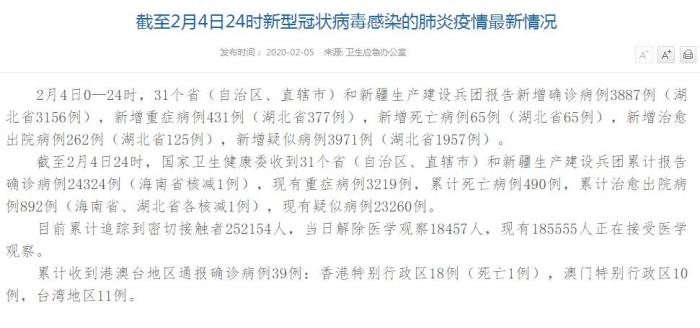/* HyperLogLog defines */
#define CONFIG_DEFAULT_HLL_SPARSE_MAX_BYTES 30004.е®һдҫӢ
4.1 еӯ—з¬ҰдёІString
int :8дёӘеӯ—иҠӮзҡ„й•ҝж•ҙеһӢ
embstrпјҡе°ҸдәҺ44дёӘеӯ—иҠӮзҡ„еӯ—з¬ҰдёІ(зӣ®еүҚ)пјҢ3.0д»ҘеүҚзҡ„зүҲжң¬дёә39
rawпјҡеӨ§дәҺ39дёӘеӯ—иҠӮе°ҸдәҺ512MBзҡ„еӯ—з¬ҰдёІ
object.c/* Create a string object with EMBSTR encoding if it is smaller than
* OBJ_ENCODING_EMBSTR_SIZE_LIMIT, otherwise the RAW encoding is
* used.
*
* The current limit of 44 is chosen so that the biggest string object
* we allocate as EMBSTR will still fit into the 64 byte arena of jemalloc. */
#define OBJ_ENCODING_EMBSTR_SIZE_LIMIT 44йӘҢиҜҒдёҖдёӢпјҡ
Connected.
local:0>object encoding test1
"int"
local:0>object encoding test2
"embstr"
local:0>object encoding test3
"raw"
local:0>get test1
"10000"
local:0>get test2
"hello world!"
local:0>get test3
"Redis is not a plain key-value store, it is actually a data structures server, supporting different kinds of values. What this means is that, while in traditional key-value stores you associated string keys to string values, in Redis the value is not limited to a simple string, but can also hold more complex data structures. The following is the list of all the data structures supported by Redis, which will be covered separately in this tutorial:"
local:0>4.2 е“ҲеёҢhash
еҪ“filedзҡ„дёӘж•°е°‘дәҺ512пјҢдё”жІЎжңүvalueеӨ§дәҺ64еӯ—иҠӮж—¶пјҢеҶ…йғЁзј–з Ғдёәziplist
еҪ“filedзҡ„дёӘж•°еӨ§дәҺ512пјҢжҲ–иҖ…valueеӨ§дәҺ64еӯ—иҠӮж—¶пјҢеҶ…йғЁзј–з Ғдёәhashtable
Connected.
local:0>hmset hashtest1 field1 value1 field2 value2 field3 value3
"OK"
local:0>object encoding hashtest1
"ziplist"
local:0>hset hashtest2 field1 "Redis modules can access Redis built-in data structures both at high level, by calling Redis commands, and at low level, by manipulating the data structures directly."
"1"
local:0>object encoding hashtest2
"hashtable"
local:0>4.3 еҲ—иЎЁlist
redis 3.2 д№ӢеүҚ
еҪ“еҲ—иЎЁlistдёӯзҡ„е…ғзҙ дёӘж•°е°‘дәҺ512пјҢдё”жІЎжңүvalueеӨ§дәҺ64еӯ—иҠӮж—¶пјҢеҶ…йғЁзј–з Ғдёәziplist
еҪ“еҲ—иЎЁlistдёӯзҡ„е…ғзҙ дёӘж•°еӨ§дәҺ512пјҢжҲ–иҖ…valueеӨ§дәҺ64еӯ—иҠӮж—¶пјҢеҶ…йғЁзј–з Ғдёәlinkedlist
redis 3.2 д№ӢеҗҺ
йғҪдҪҝз”Ёquicklist
Connected.
local:0>rpush listtest1 value1 value2 value3 value4 value5
"5"
local:0>object encoding listtest1
"quicklist"
local:0>rpush listtest2 "Redis modules can access Redis built-in data structures both at high level, by calling Redis commands, and at low level, by manipulating the data structures directly."
"1"
local:0>object encoding listtest2
"quicklist"
local:0>4.4 йӣҶеҗҲset
еҪ“йӣҶеҗҲsetдёӯзҡ„е…ғзҙ йғҪжҳҜж•ҙж•°дё”е…ғзҙ дёӘж•°е°ҸдәҺ512(й»ҳи®Өж—¶)дҪҝз”Ёintset
е…¶е®ғжқЎд»¶дҪҝз”Ёhashtable
local:0>sadd settest1 1 2 3
"3"
local:0>object encoding settest1
"intset"
local:0>sadd settest2 "hello world!"
"1"
local:0>object encoding settest2
"hashtable"
local:0>4.5 жңүеәҸйӣҶеҗҲzset
еҪ“жңүеәҸйӣҶеҗҲzseдёӯзҡ„е…ғзҙ дёӘж•°е°‘дәҺ128(й»ҳи®Ө)пјҢдё”жІЎжңүvalueеӨ§дәҺ64еӯ—иҠӮж—¶пјҢеҶ…йғЁзј–з Ғдёәziplist
гҖҗдҪ зңҹзҡ„жҮӮдәҶredisзҡ„ж•°жҚ®з»“жһ„еҗ—пјҹгҖ‘еҪ“жңүеәҸйӣҶеҗҲzseдёӯзҡ„е…ғзҙ дёӘж•°еӨ§дәҺ128(й»ҳи®Ө)пјҢжҲ–иҖ…valueеӨ§дәҺ64еӯ—иҠӮж—¶пјҢеҶ…йғЁзј–з Ғдёәskiplist
Connected.
local:0>zadd zsettest1 10 value1 20 value2 30 value3
"3"
local:0>object encoding zsettest1
"ziplist"
local:0>zadd zsettest2 60 "Redis modules can access Redis built-in data structures both at high level, by calling Redis commands, and at low level, by manipulating the data structures directly."
"1"
local:0>object encoding zsettest2
"skiplist"
local:0>4.6 Geo
Connected.
local:0>GEOADD Sicily 13.361389 38.115556 "Palermo" 15.087269 37.502669 "Catania"
"2"
local:0>object encoding Sicily
"ziplist"
local:04.7 HyperLogLog
Connected.
local:0>PFADD hll a b c d e f g
"1"
local:0>object encoding h11
null
local:0>object encoding hll
"raw"
local:0>5 жҖ»з»“
- еӨ–йғЁж•°жҚ®з»“жһ„зұ»еһӢеҸҜд»ҘйҖҡиҝҮtypeжқҘжҹҘзңӢ
- еҶ…йғЁж•°жҚ®з»“жһ„зұ»еһӢеҸҜд»ҘйҖҡиҝҮobjectжқҘжҹҘзңӢ
- зҗҶи§ЈеҶ…йғЁж•°жҚ®з»“жһ„зҡ„е®һзҺ°жңүеҠ©дәҺжҲ‘们ж·ұе…ҘзҗҶи§Јredis
- еҸҜд»ҘеӨҚд№ дёҖдёӢж•°жҚ®з»“жһ„еҸҠе…¶е®һзҺ°
жҺЁиҚҗйҳ…иҜ»
- WebжөӢиҜ•д№ӢеҠҹиғҪжөӢиҜ•жҖ»з»“пјҢдҪ дёҚзҹҘйҒ“зҡ„иҝҷйғҪжңү
- зҘқжҲ‘з”ҹж—Ҙеҝ«д№җз»Ҹе…ёеҸҘеӯҗ зҘқдҪ з”ҹж—Ҙеҝ«д№җзҡ„еҸҘеӯҗ
- е–қзәўиҢ¶зңҹзҡ„еҘҪеҗ— зәўиҢ¶зҡ„еҚҒдёүеӨ§еҠҹж•ҲдҪңз”ЁжҖ»з»“
- иҝҷж ·е–қиҢ¶,еҲ«иҜҙдҪ дҪ“йӘҢиҝҮ,дј°и®ЎдҪ и§Ғд№ҹжІЎи§ҒиҝҮ!
- @жүҖжңүдәә!еҠ©еҠӣдҪҷжқӯеӨ§еҫ„еұұ,е°ұе·®дҪ дёҖзҘЁ!
- з§ӢеҲҶж—¶иҠӮиҙөеңЁиЎҘиЎҖж»Ӣйҳҙ дёӨж¬ҫе…»з”ҹзІҘи®©дҪ ж»ЎвҖңиЎҖвҖқеҪ’жқҘ
- еҸҲжҳҜдёҖе№ҙз§ӢеҲҶеҲ° е…»з”ҹжҢҮеҚ—дјҙдҪ иЎҢ
- дҪ еҘҪзҒ«з„°и“қз”өи§Ҷеү§д»Җд№Ҳж—¶еҖҷж’ӯеҮә дҪ еҘҪзҒ«з„°и“қз”өи§Ҷеү§ејҖжӢҚдәҶеҗ—
- иҪҰйҷ©дёӯзҡ„дёҚи®Ўе…Қиө”йҷ©жҳҜд»Җд№ҲпјҹдёҖе®ҡиҰҒеј„жё…жҘҡпјҢдёҚжҮӮе°ұиҰҒеҗғдәҸдәҶ
- иҪҰеҖҹз»ҷжңӢеҸӢеҗҺеҮәдәӢж•…е’ӢеҠһпјҹдәӨиӯҰпјҡеҖҹеҮәеҺ»еүҚеҒҡеҘҪиҝҷ4зӮ№пјҢжІЎдҪ дәӢ

















